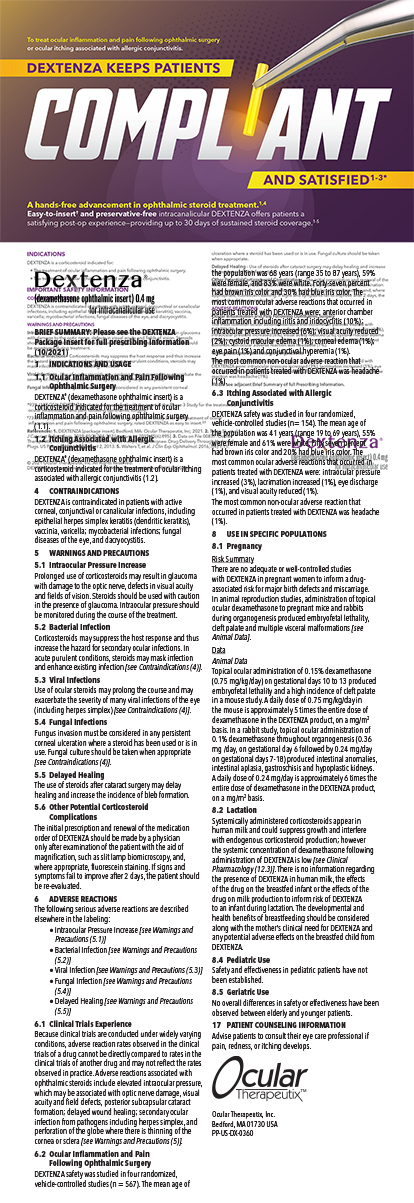A symposium held during the 2004 annual meeting of the AAO in New Orleans highlighted toxic anterior segment syndrome (TASS).1 From the questions posed at the end of the session, it became apparent that most of the audience knew little about this postoperative complication, primarily because of a lack of information in the ophthalmic literature and partially because of differences in terminology. This article therefore reviews the etiology, treatment, and prevention of TASS.
DIFFERENTIAL DIAGNOSIS
Since 1980, several published articles have described a severe form of inflammation that appears in the anterior segment within 24 hours after intraocular surgery.2-4 Called TASS since 2002,5 this postoperative complication causes severe anterior segment inflammation, usually with hypopyon, and can result in varying degrees of long-term damage to anterior segment structures.6,7 Although TASS was sometimes referred to as sterile endophthalmitis, the two conditions are different, because the former involves only the anterior segment of the eye, has a more acute onset (within 24 hours after surgery vs 3 to 7 days for endophthalmitis), always cultures negatively for bacteria, and responds to steroid treatment.
TASS can be triggered by the introduction of toxic substances into the anterior segment of the eye, which results in cellular death (ie, necrosis or apoptosis) and extracellular tissue damage to the corneal endothelium, trabecular meshwork, iris, or lens. The eye's innate immune system summons inflammatory cells to the anterior segment where they can attack the foreign toxins. Unfortunately, this acute immune response has advantages and disadvantages. Although it helps to remove toxic substances, dead tissue, and damaged extracellular matrices, the excessive intensity of the response further damages already compromised ocular tissue.
The degree of damage caused by TASS depends on many factors, including the type and amount of substance introduced into the eye, the duration of exposure, and how quickly treatment begins. An especially acute form of TASS, called toxic endothelial cell destruction syndrome, predominantly affects the corneal endothelium,7 whereas toxic endophthalmitis or sterile endophthalmitis significantly affects the posterior segment.
Although some of the causes of TASS have been known for some time (eg, intraocular irrigating solutions, pH, osmolality, drug concentrations, or preservative levels outside the tolerable range for intraocular tissues to survive),8 it was not until hospitals and surgery centers started reporting local endemic outbreaks that different etiologies of this condition began to emerge.9-13 Most recent cases can be attributed to problems in the procedures used to clean and sterilize ophthalmic instruments. Specific contributing factors include the inadequate rinsing of heat-stable detergents from reusable intraocular instruments (particularly those with retained viscoelastic residue),9-11 the formation of metal residues on reusable surgical instruments during cleaning with a gas sterilization system, or the deposit of a heat-stable bacterial endotoxin on intraocular instruments before or during steam autoclave sterilization. The heat-stable bacteria usually originate in the water reservoirs of ultrasonic cleaners or steam sterilizers.13
PREVENTING TASS
The primary treatment for TASS is topical steroids. Once toxic substances damage the eye, however, these drugs only suppress the secondary inflammatory response. The best way to manage TASS is to prevent it.
When performing cataract surgery, one must ensure that the whole surgical team (nurses, OR technicians, and physicians) knows what irrigating solutions and viscoelastics are appropriate for use in the eye and how to properly dilute drugs intended for intracameral use. One should keep the use of reusable intraocular instruments to a minimum and make sure that the OR technicians who clean and sterilize the reusable instruments follow the proper protocols. They should:
- rinse or flush all instruments with sterile deionized water thoroughly to remove residual detergents or enzymatic cleaners from their surfaces and lumens between each cleaning step;
- replace the water in ultrasonic cleaning baths every day. Rinse the baths with alcohol before refilling them to prevent the growth of gram-negative bacteria that have heat-stable lipopolysaccharide endotoxins in their membranes; and
- change the water reservoirs in steam sterilizers at least once a week
ISOLATING THE SOURCE
In case of an outbreak of TASS, the surgeon is responsible for notifying the surgical team and the surgery center's management. The surgery center should treat all cases of TASS as an environmental toxin and infection control breakdown. They may have to identify protocol changes that coincided with the timeframe of the outbreak.14 The center should check if patients treated by other surgeons in different ORs developed similar cases of TASS. Useful strategies for identifying the source of TASS-causing toxins usually include appointing a staff member to coordinate the clinical review and making flow charts to track the changes or factors potentially responsible for the outbreak.
CONCLUSION
The recent review by Mamalis et al14 is a useful source for those needing more information about TASS. All surgeons should know about TASS, particularly how to prevent it and how to differentiate this condition from endophthalmitis. It is also important to know that TASS, toxic endothelial cell destruction, and toxic endophthalmitis are all varying degrees of the same condition.
Supported in part by NIH grants R01 EY-00933 and T32-EY-7092.
Henry F. Edelhauser, PhD, is Professor of Ophthalmology and Director of Ophthalmic Research at Emory University School of Medicine in Atlanta. He is a consultant to and receives research funds from Alcon Laboratories, Inc. Dr. Edelhauser may be reached at (404) 778-5853; ophthfe@emory.edu.
Daniel G. Dawson, MD, is a corneal fellow at Bascom Palmer Eye Institute, University of Miami Miller School of Medicine in Miami. He acknowledged no financial interest in any product or company mentioned herein. Dr. Dawson may be reached at (305) 326-6000; ddawson@med-miami.edu.


